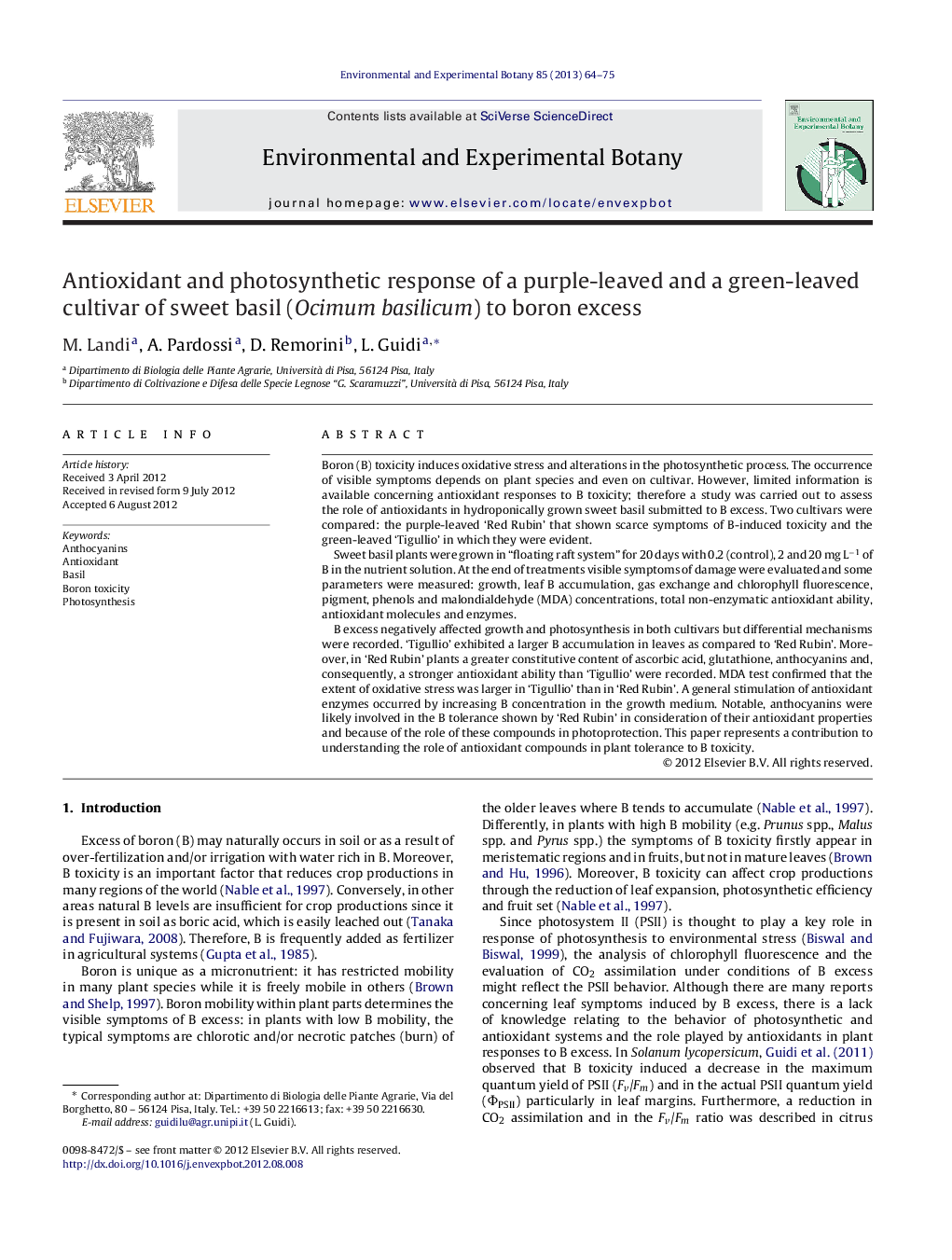| کد مقاله | کد نشریه | سال انتشار | مقاله انگلیسی | نسخه تمام متن |
|---|---|---|---|---|
| 4554632 | 1628092 | 2013 | 12 صفحه PDF | دانلود رایگان |

Boron (B) toxicity induces oxidative stress and alterations in the photosynthetic process. The occurrence of visible symptoms depends on plant species and even on cultivar. However, limited information is available concerning antioxidant responses to B toxicity; therefore a study was carried out to assess the role of antioxidants in hydroponically grown sweet basil submitted to B excess. Two cultivars were compared: the purple-leaved ‘Red Rubin’ that shown scarce symptoms of B-induced toxicity and the green-leaved ‘Tigullio’ in which they were evident.Sweet basil plants were grown in “floating raft system” for 20 days with 0.2 (control), 2 and 20 mg L−1 of B in the nutrient solution. At the end of treatments visible symptoms of damage were evaluated and some parameters were measured: growth, leaf B accumulation, gas exchange and chlorophyll fluorescence, pigment, phenols and malondialdehyde (MDA) concentrations, total non-enzymatic antioxidant ability, antioxidant molecules and enzymes.B excess negatively affected growth and photosynthesis in both cultivars but differential mechanisms were recorded. ‘Tigullio’ exhibited a larger B accumulation in leaves as compared to ‘Red Rubin’. Moreover, in ‘Red Rubin’ plants a greater constitutive content of ascorbic acid, glutathione, anthocyanins and, consequently, a stronger antioxidant ability than ‘Tigullio’ were recorded. MDA test confirmed that the extent of oxidative stress was larger in ‘Tigullio’ than in ‘Red Rubin’. A general stimulation of antioxidant enzymes occurred by increasing B concentration in the growth medium. Notable, anthocyanins were likely involved in the B tolerance shown by ‘Red Rubin’ in consideration of their antioxidant properties and because of the role of these compounds in photoprotection. This paper represents a contribution to understanding the role of antioxidant compounds in plant tolerance to B toxicity.
Journal: Environmental and Experimental Botany - Volume 85, January 2013, Pages 64–75